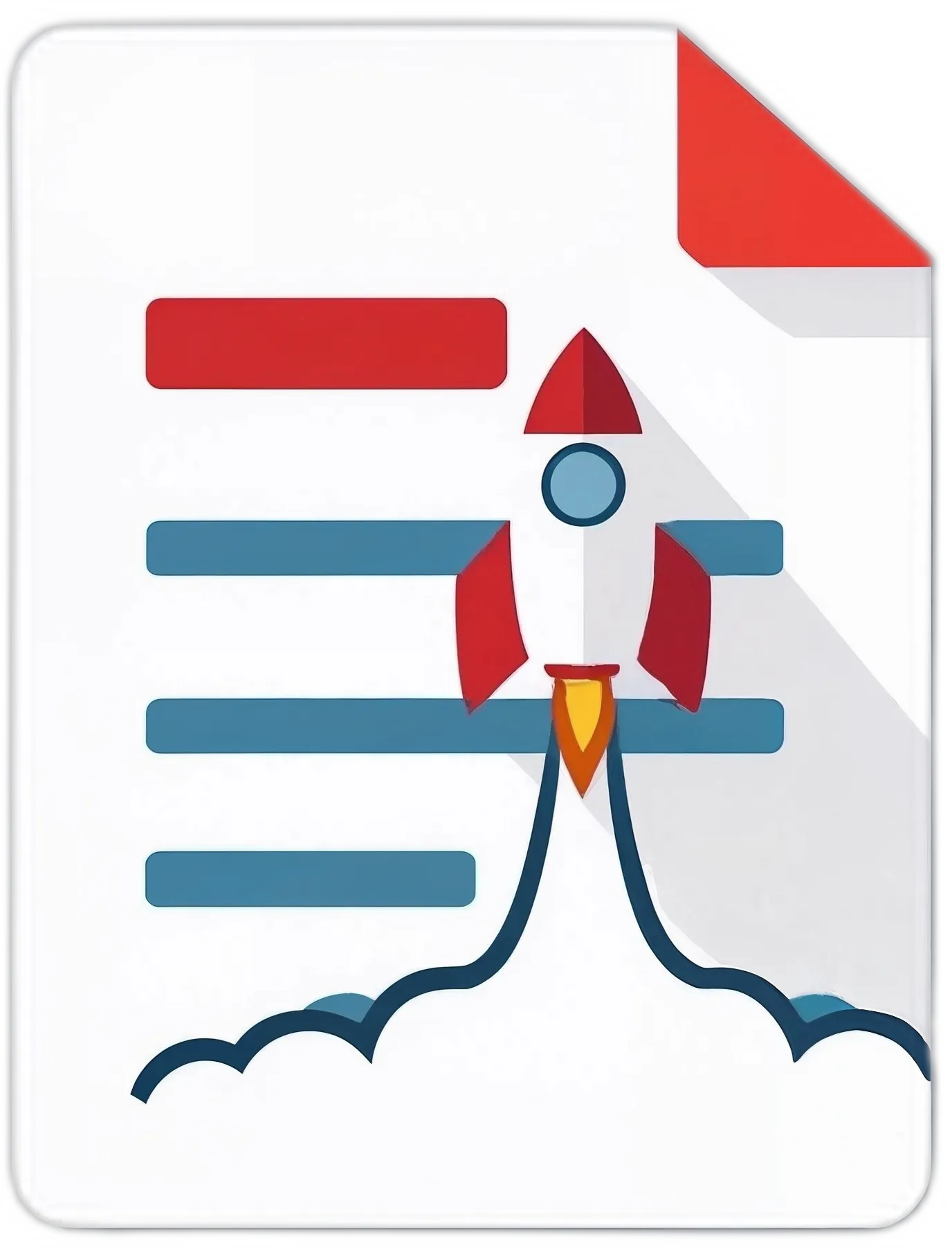How to Tailor Your CV for Different Industries

In today's competitive world, submitting a one-size-fits-all CV will not help you get your dream job. Tailoring the resume for each position makes a world of difference. It is imperative that candidates develop tailored resumes which highlight the exact job requirements. Considering the fact that hiring managers are bombarded with dozens, if not hundreds of applications, time is not on their side. The average time spent on reviewing an application, to put things mildly, is shocking. With that said, crafting a CV that showcases the best and most pertinent skills will give you the edge over the other candidates. Tailoring your experience and presenting them in a best-light will maximally increase your chances of landing that coveted interview.
The problem is made worse by the fact that many employers now use Applicant Tracking Systems (ATS) as a standard. Most companies today make use of these software programs that scan and filter resumes, looking for specific keywords and qualifications related to the job description. A CV that isn't strategically aligned with branded terms and skills relevant to the industry stands the risk of being screened out and never getting past the auto filtration. So, using CV formats and structures to appeal to ATS algorithms is as important as tailoring them, and optimizing CVs goes far beyond capturing the attention of a hiring manager-it is a battle against technology that serve as the first line of defense for recruiters.
Beyond your qualifications a well-crafted tailored CV speaks to a more profound deeper beyond surface issues. It shows an informed and educated deep interest in the position and the company. Taking the time to research the Company, its culture and values, tailoring your application indicates that you did not just cast a wide net but that you are attracted to them because you understand their context, their pain points, and their needs. This personalized approach demonstrates proactive engagement and can set one apart from many others in the pool.
The Foundation: Researching Your Target Industry
You need to understand the specific industry that you are working toward in order to prepare an appropriately targeted CV. This involves using multiple methods of researching it.
Research the Job Description:
Examine the job description as a route map and consider it as your guidance. This summarizes the tasks to be done, most important and relevant skills, qualifications needed and words which are relevant for the employer. Pay attention to the words, patterns, and elog as well as vocational experiences and skills receiving the greatest attention. Identifying "must-have” and "nice-to-have” elements enables you to focus your CV on essential components. The description serves as a guide that shows the words and features needed to open doors for the hiring personnel and the ATS.”
Understanding Company Culture and Values:
Aside from the technical requirements, it is important to understand the company's persona. Go through the company website carefully and don't skip browsing the "About Us” and "Careers” pages because they usually encompass the organization's goals, value, and general work culture. Also check out their social media handles for clues about their social atmosphere, ongoing endeavors, and upscale, or employee interactions. Where applicable, subtle changes to the CV's voice or the chosen experiences to showcase can be made to demonstrate such cultural elements. This shows that the individual strives to portray not only qualifications but an appreciation for the company's identity.
Keeping Up With the Industry: Trends and Keywords:
An industry is a constantly changing entity. New technologies, methodologies, and best practices emerge. Make sure to monitor some of these developments and add relevant, up-to-date industry-specific keywords such as tools, software names, and terminology to your CV. Doing so demonstrates thought leadership and confirms that you are up to date with the latest breakthroughs in the field. Use jargon carefully though, don't go overboard with specialized terminology or acronyms known only to those in the industry. Staying current always requires some effort. Updating your CV also requires trend analysis, and these activities will help add value.
Using Online Platforms and Social Networks:
Take full advantage of online platforms and professional networks. Analyzing CVs and resumes as well as Richard's drafts for the positions you are targeting within your industry will familiarize you with expected structures and contents, including how they are presented. Jobscan and similar tools help improve the author's chances by analyzing provided resumes against the specified job description. Claiming to compare the CVs issued with those of people holding similar positions in target companies via LinkedIn helps reveal framing structures used on skills, experiences, and education. Such tools are helpful not just for creating a CV, but analyzing the way a company expects a potential employee to market themselves.
Customizing Your CV: A Step by Step Approach
Prepare all your resources because now it is time to customize every important segment in your CV.
1. The Summary of Your Skills or Objective:
This section gives you the ability to help yourself since it is on top, most potential employers are likely to see it. Each Industry and particular position requires a different Objective so make sure to replace it. It includes Skills of the candidates, Experiences where Externships and Internships should be included, and eliminates every E-Requirement Issues Emphasized by the organization. This section is critical to add relevant wording to aid both Humans and Systems. Use the Job Description Highlights copiously to demonstrate articulation/ how precisely the candidate speaks to demonstrate the prime responsibilities assigned in the job advertisement.
In case a candidate is moving to a new field, an objective statement is particularly useful. You can here highlight your goals and elucidate skills that are transferable to the new field. Put forward a strong statement of how the job is critical and outline international benefits in a summary as an opening. The coming sentences will be summary and should be dispensers of cliches.
2. The Skills Section:
The skills that are highlighted in the job description should be captured in this section. For maximum simplicity and impact, categorize your skills into: technical skills, soft skills, transferable skills, and industry-specific knowledge. Place the most relevant skills prominently near the top of the section. Further, make sure to include both hard skills (technical knowledge and software proficiencies) and soft skills (interpersonal, communication, and teamwork) to create a more balanced profile.
For the highest ATS rating, use the exact phrased keywords from the job advertisement under "skills identified" them. Use a functional resume format (one that emphasizes on skills instead of chronology) or a hybrid/combination format to align with the positioning in the CV if your work history doesn't align directly to the industry.
3. The Experience Section:
This section reinforces the core of your CV where you have to showcase your value added. Every single bullet describing your role needs alignment to the skills and responsibilities within the description, even if that means customizing switching sectors. Always remember to highlight responsibilities and accomplishments that will demonstrate relevant abilities to this industry.
Whenever you can, quantifiable metrics should frame your accomplishments. Citing measurable outcomes percents, financial figures, time reduction, productivity improvements increases the credibility of your assertions. Modify the description of responsibilities to use field-specific language (without deviating from the truth) to make the job more appealing to recruiters and managers who work in that sector. Most importantly, highlight the value and impact of your work-not just a compilation of tasks performed minutes ago. Do use strong project management, communication, problem-solving, leadership, and even flexibility as dominant skills in order to demonstrate your broad capabilities during this part.
4. The Education and Certifications Section:
Customize this section to reveal the most relevant qualifications for your potential employer. If applicable, placing appropriate credentials on the top can get the employer's attention in signaling your fit. Prioritize attained degrees, certifications, and coursework that correspond with the job description. If classwork showed relevant skills or knowledge, include it along with details about pertinent class projects, accolades, or academic awards.
Ensure these are particularly visible if the job posting requests other professional certifications or industry-specific licenses (healthcare, finance, etc.). For entry-level applicants, career changers, or relocation candidates, consider adding a 'Relevant Coursework' subsection to outline academic work that demonstrates foundational knowledge for the new field.
Industry Spotlights: Tailoring in Practice
Let's explore how these industries work with the highlighted concepts:
Technology:
- Focus: Concentrate on technical skills: include programming languages (Java, Python, Javascript), software tools (AWS, Git), methodologies- Agile, and specifics of some projects.
- Quantify: Provide metrics for improvement. Report on milestones and important KPI improvements such as easing system performance cutting bugs, improving productivity and reducing costs.
- Highlight: Flexibility; crucial; mention novel learning and implementation. Don't forget including URLs to your professional sites and Github where others can view your portfolio.
- Language: Incorporate appropriate role-related technical languages such as, "Developed and implemented new features... using Java and Spring framework.”
- Summary Example: "Software Engineer with more than five years experience in developing and deploying Java-based, Python, and AWS web applications. System performance improvement of 15% achieved.”
Healthcare:
- Focus: Emphasize relevant clinical rotations, patient care skills (patient assessment, medication administration, and wound care), and important certifications (RN, BLS, ACLS, CPR).
- Quantify: Show changes made with regards to efficiency and patient outcomes, for example: " Provided direct patient care to an average of eight patients per shift for a month and received positive feedback cumulatively from 95% patients."
- Highlight: Positive proficiency with EHR (Electronic Health Records), telemedicine, teamwork in interprofessional collaboration, strong participation, and communication indicators are increasing in importance.
- Language: Employ exact and unequivocal medical phrases.
- Summary Example: "Registered Nurse specializing in compassionate patient care, with over 8 years of experience in acute care settings. Expertise includes medication administration, vital sign monitoring, and multidisciplinary team collaboration.”
Finance:
- Focus: Strong analytical skills, financial model, risk management, and regulatory framework knowledge are crucial.
- Quantify: Cite particular metrics indicating budget control, cost savings, revenue generation, ROI, and even accuracy of a forecast (for example, "Achieved 10% accuracy improvement in forecasting with new methods”)
- Highlight: Key financial software like Excel, Tableau, and Bloomberg Terminal are very important for many employers. Also list advanced degrees like MBA, CFA, or CPA that are directly relevant.
- Language: Use correct but uncomplicated language. Attempt to avoid dense technical jargon when possible.
- Summary Example: "Financial Analyst presents a highly analytical profile, profound in risk management and financial modeling, boasting an impeccable track record of accurate forecasts and insightful analysis.”
Creative Fields:
- Focus: Your CV and portfolio should showcase achievements in structural design, drawing, and artistry. Portfolios are often a requirement.
- Quantify: Where possible, quantify the impact of your work (increased engagement by X%, improved brand recognition, contributed to sales X amount).
- Highlight: Use of Adobe Creative Suite, Figma, Sketch, or other software relevant to the field is a must. Communicate innovative self-branding and style mastery.
- Language & format: Consider using a visually stunning, grapically regal, unorthodox-yet ATS-compatible-layout resonating with your design aura.
- Summary Example: "Skilled graphic designer who has developed well over seven compelling marking graphic works for websites, social media and has crafted marketing designs. She is well versed in the Adobe Creative Suites.”
Mastering the ATS: Keywords and Formatting
While recruiting, scanning resumes is the first form of research which goes through an ATS (Applicant Tracking System). The ATS filters candidates by scanning documents with the correct keywords. Not having the required terms risks a CV being thrown into a virtual blackhole. Even after the resumes are rescanned by humans, recruiters using different keywords will face the same issue. Commonly searched terms include basic skills, certifications, and buzzwords from a particular industry as mentioned in the description.
For Correct Keyword Use:
- Study The Descriptions Provided: Capture the candidate qualifications scrapped for specific key phrases such as skills and abilities within offered positions.
- Smioth Entry: Take great care when inserting key parts of the description in relevnt sections such as summary that details profvsiancies and arks work experience such section descriptions.
- Using Their Words: Do no change the preferred phrasing of the description wherever possible to avoid estrangement from the ATS. Phrase checking must be formal as it involves underscoring your resume wording and descriptors against job advertisements.
- Verbally Identifiable Factors: While maintaining phasing is critical, the notion painted must Have the synonym to the main terms blended with related expressions.
Common Pitfalls to Avoid:
- Keyword Stuffing: Completely avoid the repeated unnatural use of keywords. ATS and human recruiters find it untactful, and technology is evolving. It's best to use keywords that resonate truthfully with your work history and experiences.
- Formatting Concerns: Overly intricate designs such as graphics, tables, or columns in templates can confuse ATS. They prefer clear designs with readable fonts, so stick with simple structure.
- Submission Formats: .doc, .docx, and .pdf formats support ATS and are accepted for parsing, so submit your resume formats in these areas.
Considerations to Refine Your Tailoring Techniques
Think of these other factors in addition to section core, ATS tailoring, and optimization:
Avoidable Common Targeting Errors
Beware of self-defeating application behaviors such as:
- Using generic CV's for multiple applications.
Applying Flexible Skills Politically:
Communicative skills are essential from every department and in diverse roles, but there are also those that grant you victory in an entire industry. These include teamwork, leadership, problem solving, critical thinking, adaptability, and project management. When highlighted, these skills display the potential of successfully flourishing in a new department, so changing divisions is not that risky. From previous experiences, outline expectations and relate them explainably. If the work history you do not have direct working history with, a skills based, functional resume will foreground these abilities.
- Overloading keywords.
- Not researching and fitting into the company culture.
- Ignoring ATS compliance (file type, complex formatting).
- Including irrelevant prior experience that dilutes the area of focus.
- Unprofessional font choice and excessive design elements.
- Simple spelling errors showing lack of attention to detail.
- General vague objective statement.
- Not using data and metrics to quantify accomplishments.
The Cover Letter's Supporting Role: How It Is Used to Enhance the Resume
Make sure to customize your cover letter for each application. It's your opportunity to explain how your skills and experiences align with the requirements, and how your particular interest stems from the role and the company itself. Use it to link your history to the mission and problems the company is facing in the industry. Including specific phrasing from the job description in your cover letter can further support your application's value for both ATS and human evaluators.
Leveraging Resources and Frameworks:
While templates can serve as a guiding framework, avoid using them without alteration. Review industry-specific resume examples and focus on their activities, keywords, and how they showcase their accomplishments. Consider various styles and formats of resumes, but ensure that the chosen layout is ATS-compliant and professional. Use templates with simple shapes that promote clarity. Numerous industry-specific resources, templates, and examples are available from university career services, resume builders, and career advice websites.
Conclusion: The Strategic Tailoring Necessity
To summarize, tailoring each CV for different sectors is an elemental obligation that, if ignored in today's employment climate, will make job hunting nearly impossible. Adjusting every single detail of your CV and relevant industry keywords alongside comprehensive background research for each company raises your chances visibility to employers considerably. This painstaking effort makes certain that your application resonates with the recruiters, efficiently navigates through Applicant Tracking Systems, and markedly enhances your prospects of an interview.
Do not forget, a well-tailored CV demonstrates much more than a mere enumeration of qualifications; rather, it shows your respect for the unique requirements of the particular industry, alignment by the target company, and excitement towards the position. Your ability to strategically adopt a comprehensive approach will make you an better qualified, adaptable, and most importantly, a voracious contender amidst stiff competition for the selected vocation.





